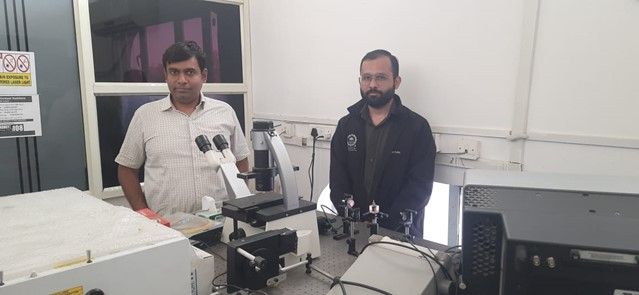
Indore (Madhya Pradesh): In a groundbreaking development, researchers at IIT Indore have created a compact and affordable cancer screening device using photoacoustic technology. This innovation is designed for early-stage cancer detection, particularly in remote areas where advanced healthcare facilities are limited.
The device is based on the principle of Photoacoustic Spectral Response (PASR), which combines optical and acoustic signals to detect abnormal tissue changes. It is aimed at addressing the growing need for early cancer detection in India, especially for breast cancer.
This cutting-edge technology developed by Prof. Srivathsan Vasudevan from IIT Indore’s Electrical Engineering Department could be validated in a hospital care set up through the collaborative research efforts of Dr Sramana Mukhopadhyay lead Investigator from AIIMS Bhopal, Department of Pathology and Lab Medicine along with faculty of Department of Radiation Oncology, Dr Saikat Das. It is a part of the MoU signed by the Director of IIT Indore Prof. Suhas S Joshi and the Executive Director and CEO of AIIMS Bhopal Prof (Dr.) Ajai Singh that has paved the way to collaborative research in biomedical engineering and its applications in the healthcare system.
Prof. Suhas Joshi, Director IIT Indore said “The societal impact of this innovation is profound. Most diagnostic tools used in India, such as MRI and CT scanners, are imported and expensive, making them inaccessible to a large portion of the population. The device has the potential to significantly improve cancer detection in rural and underserved areas, where early diagnosis can make a life-saving difference.”
Prof. Vasudevan said “The heart of the device lies in its ability to distinguish between cancerous and non-cancerous tissues. A compact pulsed laser diode (PLD) is used to generate light, which interacts with the tissue. The response is then analyzed to identify whether the tissue is normal, benign, or malignant. This cost-effective screening tool is designed to reduce the need for expensive diagnostic methods and is particularly useful for breast cancer screening, as it can differentiate between malignant tumors, fibrocystic changes, and normal breast tissue.”
The photoacoustic technique can be combined with ultrasound technology to provide additional information about tissue vascularity and other characteristics, allowing for a more accurate diagnosis. This combination can make it particularly useful for identifying cancerous tissues that other methods alone may miss.
The device will undergo clinical trials before it is ready for mass production and licensing. Once these trials are completed, the technology will be made available to the healthcare industry for commercialization